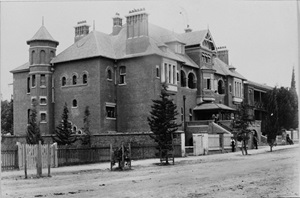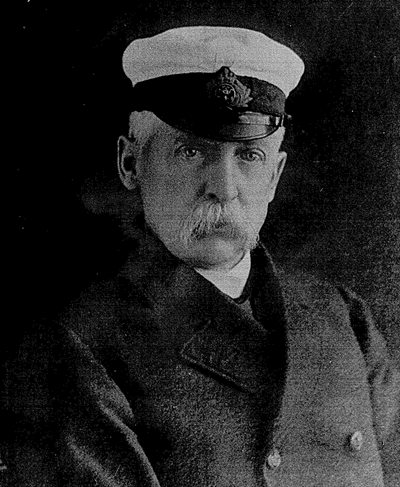2025 | Volume 26 | Issue 2
Author: Dr Peter F Burke FRCS FRACS DHMSA
William Trethowan was born in Creswick, Victoria, on 9 December 1860. When the College of Surgeons of Australasia came into being in 1927, he was one of the two Western Australian founders.
There are no records of his early childhood other than he attended the Ballarat College, where he apparently provided clear indications of intellectual prowess.
His path to surgery was far from orthodox, as he worked in a bank for 10 years to save money, which would enable his undertaking further studies.
At 28 years of age, he began the medical course at Marischal College, which had merged with King’s College, Aberdeen, in 1860, creating the University of Aberdeen. Trethowan studied there between 1888 and 1892 achieving unusual success, demonstrating particular interest in anatomy and surgical pathology.
He graduated as the most distinguished student of his year with first class honours and the John Murray gold medal. He then served as house surgeon and physician at the Rotunda Hospital in Dublin, and the West London and Chelsea Women’s Hospitals, from 1893 to 1894, before returning to Australia.

Perth Hospital 1896, State Library WA
William Trethowan then became an assistant in a very large and influential practice in Perth, Western Australia, working with Doctors Kenny and McWilliams, before entering a long period with them as a partner. Almost immediately he was appointed to the Perth General Hospital where he served for 25 years, gradually relinquishing his general practice for surgery.
His obituary records, ‘It was not long before his colleagues recognised that in William Trethowan Perth had gained a surgeon of no usual ability, dexterous, sound and alert. His fame as a diagnostician grew rapidly and by the end of the century, he was one of the leaders in the surgical world of the West.’
In 1901 he was elected a member of the Council of the West Australian branch of the British Medical Association (BMA), becoming president in 1907. From 1914 and except for the time he was abroad on active military service, he was honorary treasurer of BMA. In 1907 he also accepted the office of president of the local branch of the Saint John Ambulance Association.
In 1909 he was appointed surgeon at the Perth Children’s Hospital and in the following year surgeon at the Home of Peace. He is still regarded by St John of God Hospital, Subiaco, as the father of that institution.
In 1913 the Federal Committee of the branches of the BMA in Australia formed the Australasian Medical Publishing Company Limited and Trethowan was elected a member of that company, where he worked diligently and with a particular interest in the Medical Journal of Australia.
In 1915 at 55 years of age he enlisted with the First Australian Imperial Force and left Australia as a Major with the Third Australian General Hospital. He served first at Lemnos and later was transferred to Egypt—serving throughout with distinction. He returned to Western Australia in June 1916, later being promoted to the rank of honorary Lieutenant-Colonel: subsequently he served on the Repatriation Board.
Perhaps as a product of his pre-medical school activities Dr Trethowan had quite extensive property interests in the developing city of Perth, as revealed by study of Western Australia’s Register of Heritage Places.
In Palmerston Street, now Northbridge, Trethowan built two sets of three single-storey terrace houses in 1907 in the Federation Queen Anne style—one set on the north side at numbers 17-21, and the other set on the south side of the street. The three attached residences on the north side remain as a rare example of a modest terrace of this architectural style, the set on the south side was demolished for the construction of the Graham Farmer Freeway and Northbridge Tunnel.
Also in 1907, at the Newcastle Street corner of Palmerston Street, Trethowan constructed an ‘elaborate two storey commercial building’ and adjoining it in Palmerston Street, a two-storey residence.
At the other end of Palmerston Street, around the corner in Aberdeen Street, Dr Trethowan took up residence in a grand c.1892 house, now listed as No. 162—currently listed online as a ‘10-bedroom, four-bathroom house in Northbridge.’
After the early frenetic days of establishing his practice, Dr Trethowan now in pure surgical practice, found time for the recreative aspects of life: he was a good golf player and unsurprisingly president of the South Perth Golf Club.

Commodore William Trethowan RPYC
Dr Trethowan listed Aberdeen Street as his address when he joined the Royal Perth Yacht Club (RPYC) on 18 March 1909.
The good doctor rose through the RPYC committee ranks briskly:
1910/1911 elected to serve on General Committee
1911/1912 elected to the rank of Rear Commodore
1912/1913 elected to the rank of Vice Commodore
1913 elected to the position of Commodore, where he served until 1915
1916, elected back to General Committee, where he served until 1919
1919 Regatta Committee
1928 Honorary Life Member of Royal Perth Yacht Club.
West Australian Airways operated the first scheduled airline services in Australia, in December1921, flying between Perth and Geraldton. The Bristol Tourer, a British civil utility biplane, was one of the aircraft that was used: some examples were fitted with a canopy to cover the one or two passenger seats in the rear cockpit. The pilot's cockpit, however, remained open.

Charles Kingsford Smith and co-pilot Charles Ulm, and Bristol Tourer
It is said that in 1922 Trethowan flew in a two seater Bristol biplane piloted by Charles Kingsford Smith, to Carnarvon, over 400km north of Geraldton. There, he performed an emergency tracheotomy on a doctor’s daughter.
In 1920 he retired as honorary surgeon for the Perth General Hospital and was appointed Consulting Surgeon. Five years later he became Consulting Surgeon to the Children’s Hospital and to the Home of Peace—institutions that he had given magnificent service to for many years.
His obituary notes that at this stage his untiring energy began to lessen and Dr Trethowan sought more leisure and a less strenuous life.
In medical politics his guidance and judgement were always sound and wise—playing a remarkable role in the development of the Western Australian Branch of the BMA and the medical profession of that state. For many years he was a member of the Medical Board of Western Australia.
During his last two years he took an active part in the work of a special medical committee of the State Branch of the BMA in connexion with the Workers Compensation Act.
It was recorded that he was the best of husbands and the most devoted father. He lived for his professional work and for his home, spending himself for the benefit of those who needed his help.
He was a man of the highest courage and integrity, and with his charming personality was beloved by all with whom he came in contact. He died on 17 June 1929 in his 68th year leaving a wife, three sons and a daughter.